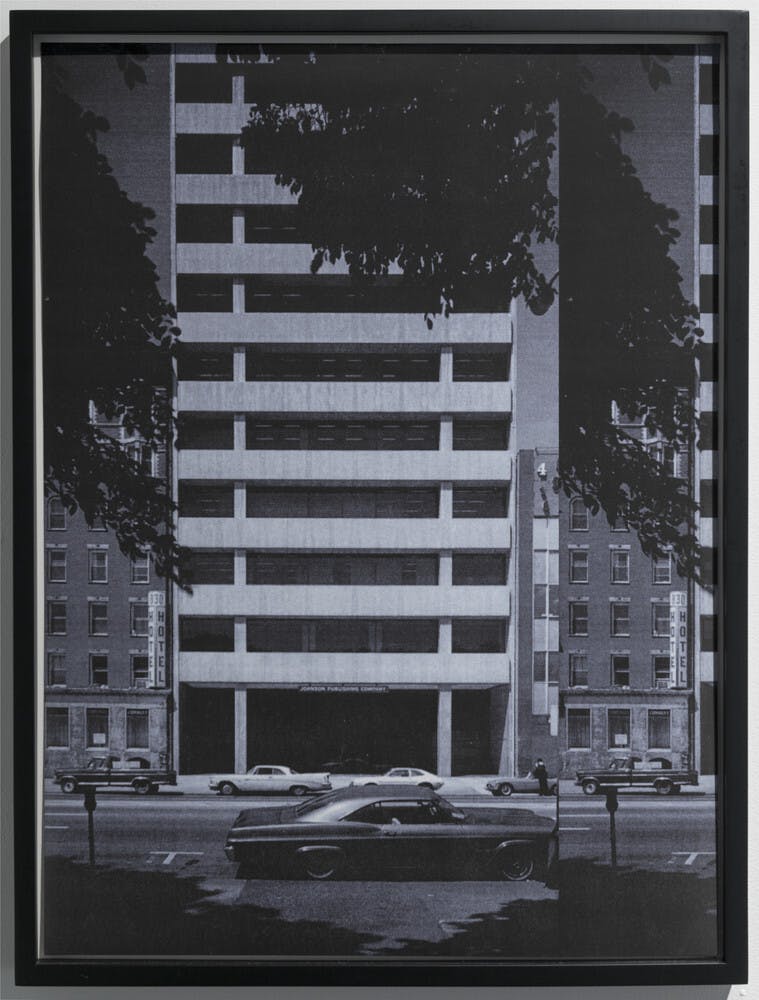Johnson's Publishing Company Building, 1971, 2011

- Artist
Martine Syms
- Title
Johnson's Publishing Company Building, 1971
- Date
2011
- Medium
Altered pigmented inkjet print
- Dimensions
24 × 18 in. (61 × 45.7 cm)
- Credit line
The Studio Museum in Harlem; Museum purchase with funds provided by the Acquisition Committee
- Object Number
2015.4
The Johnson Publishing Company, the publishers of Ebony and Jet magazines, was founded in Chicago in 1942. The company’s South Michigan Avenue headquarters, completed thirty years later, is the first Black-owned building in downtown Chicago. Here, Martine Syms alters an archival photograph of the building by copying the leftmost segment of the image onto its right side. The repetition of the hotel, tree branches, and part of the headquarters suggests the potential for infinite replication, and complicates a simple reading of both the image and the company’s standing as a symbol of a shared Black experience.
Johnson's Publishing Company Building, 1971, 2011

- Artist
Martine Syms
- Title
Johnson's Publishing Company Building, 1971
- Date
2011
- Medium
Altered pigmented inkjet print
- Dimensions
24 × 18 in. (61 × 45.7 cm)
- Credit line
The Studio Museum in Harlem; Museum purchase with funds provided by the Acquisition Committee
- Object Number
2015.4
The Johnson Publishing Company, the publishers of Ebony and Jet magazines, was founded in Chicago in 1942. The company’s South Michigan Avenue headquarters, completed thirty years later, is the first Black-owned building in downtown Chicago. Here, Martine Syms alters an archival photograph of the building by copying the leftmost segment of the image onto its right side. The repetition of the hotel, tree branches, and part of the headquarters suggests the potential for infinite replication, and complicates a simple reading of both the image and the company’s standing as a symbol of a shared Black experience.